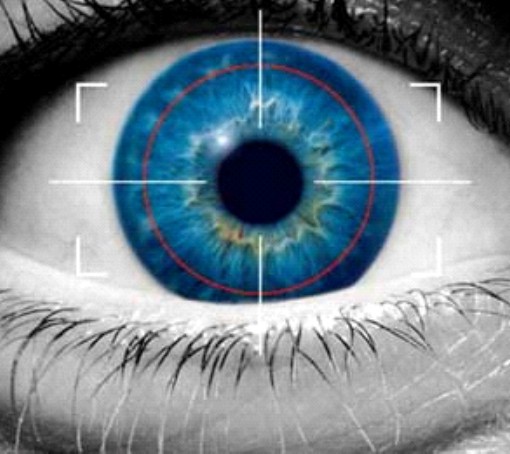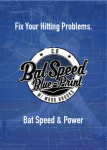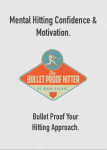It takes only four-tenths of a second for a fastball to reach home plate which is only 60 ft 6 inches away.
A hitter has an average of about two tenths of a second to decide whether to swing or not which means the hitter has only two-tenths of a second to process this visual information and react.
The hitter has to recognize whether a pitch is located on the inside or outside part of the plate, recognize a breaking or off-speed pitch. The highest level of athletes can process this information quicker which gives them more time to make adjustments to their swing. Ichiro Suzuki has gone on to say,
” You can only hit when the information picked up by your optic nerve is processed by your brain and then transmitted accurately to your body. If your eyes can’t pick it up, then you can forget about good results”.
[leadplayer_vid id=”537D3F9C69EBD”]
Try this eye exercise
So we now have come to know that it doesn’t matter how sound your mechanics are, how good your approach is or if you have plus- plus power. You can’t hit what you can’t see. One of the biggest differences between an advanced hitter and an average hitter is his ability to use his eyes in an effective way. He has to be able to compute what he sees and react to it quickly enough. It is well-known that athletes have better vision capabilities than the general population but through proper dieting and consistent vision exercises, your vision skills can be improved.
What you can do to improve your vision skills will be explained in a bit.
Baseball requires for players to have a unique set of vision abilities as well. In order to hit we have to judge, pitch rotation, velocity, in order to bunt accurately we have to have the correct depth perception. What is a common misconception about baseball is that there isn’t a difference between good eyesight and good vision skills. THERE IS!!!!!!! How good your “eye-sight” is determined by your ability to interpret information and surroundings from visible light reaching the eyes. Visual skills, on the other hand, determines a whole other set of attributes which can all be improved to become more consistent hitters. Think about what increasing your vision skills can do to your batting average!!
Depth Perception
So essentially depth perception is your ability to perceive objects in three dimensions. More importantly, it allows you to judge an object’s speed and distance. In order to have efficient depth perception, you MUST be able to use your eyes simultaneously. The more functional your eyes work together, the better the results.
Visual Tracking
Visual Tracking is the process of your eyes measuring their point of gaze or the motion of the eye relative to the head. Visual Tracking is important for a hitter’s pitch recognition skills to see more effectively how the defense is playing you. Visual tracking is something that all successful quarterbacks have in common. Being able to scan the field in a more effective way will allow you to respond quicker and more accurately to external stimuli on the field.
Speed of eye dilation
Similar to other visual skills, the speed at which a baseball player ‘s eyes are able to focus can be trained and improved overtime. The ability for your eyes to dilate will affect your ability to pick up a pitch coming in the zone. The closer the ball gets to you the more your eyes dilate, thus the faster your eyes are able to dilate, it will also increase the time you will have to react.
Visual reaction time ( Optic Nerve Processes)
The optic nerve transmutes visual information from the retina to the brain. Think of your optic nerve process as a computer (essentially that’s what it is) the faster the information is processed the slower the ball will look in the zone. This process functions at its highest when you are relaxed. Have you ever noticed that when you are taking a pitch on a 3-0 count the ball looks bigger and you may even be able to see the seems better? The muscles surrounding the eyes have completely relaxed with very little strain. (Imagine Neo in the Matrix, I wonder how productive his Optic Nerve was:)
Visual Flexibility
In my opinion, between Visual flexibility and Optic Nerve Processes, these two attributes are the most important vision skills to train. Visual flexibility allows for your eyes to move together to allow sight to become more efficient. Training this will allow a hitter to get his eyes on the ball with more accuracy and in less time.
[image src=”/wp-content/uploads/2013/02/Screen-shot-2013-03-07-at-3.41.15-PM.png” linkto=”https://www.toplaybaseball.com/hitting-machine-academy/” width=”650″ height=”180″ lightbox=”false” autoresize=”true” clickthrough=”false”]
Perfect Your Swing & Achieve Real Hitting Power!
What if you could tap into hidden potential in your swing? What if you could achieve elite levels of bat speed with simple hitting drills that refine your approach and cure your swing viruses?
Grab Your Copy of The Bat Speed Blue Print 2.0
Are You A Bullet-Proof Hitter™?
Become A Bullet Proof Hitter By Mastering These 7 Simple Principles.
The Stories In This Audio-Book Are 100% True! The Hitting Tips & Advice Are 100% Tested For Mental Performance In The Batter’s Box!
Grab Your Copy Of The Audio-Book Here!
Hitting Problems Fixed!
…Click the link below to get access to up to date hitting drills, interviews with baseball scouts and countless hours of premium baseball information.
This will be the FUNNEST hitting advice you’ll ever try to apply!
Join the Hitting Machine Academy




20 replies to "Increasing Baseball Vision and Reaction"
could you make the second video available in canada?
Go to hola.org to use an IP address in the US (or country of your choosing). It’s free and it works for other uses as well, e.g. Hulu, Pandora, network TV sites, etc. Good Luck!
What is wrong with the video!!!!!
[…] Increasing baseball eye-sight and reaction. […]
[…] helpful batting tips and advice about hitting then a great place to start is researching about the eyes. You could have the best swing in the world, but having flawless hitting mechanics won’t do you […]
sorry for the videos being down. They will be up soon enough!
It’s been six years…
Dr Seiller,
Is the 20/20 promotion still available for players wanting a to get an idea of the program you have to offer?
We are not familiar with the promotion term you mentioned. Because special 3D glasses are necessary to experience the program and it takes some time to get an effect, similar to a weight training program, we have implemented a low cost entry level method of using the program. It is on our site
20/20 is a promotion (currently being offered) by https://www.sportseyesite.com/
Please only pay attention to those that have scientific credibility.
https://www.vizualedge.com/vision-performance-trai…
I will have to admit, during my first scout visit with a Kansas City cross checker, he did evaluate me using this precise vision program during my Sr of college.
Well give me a few days. I would like to spend more time researching different websites about their sports vision program and what they have to offer.
I know that some vision program are coming up with some pretty interesting things that may change the game as we know it.
I'll get back to this post in a few days.
You are correct that the optic nerve plays a role, but in order to define the role I am citing a definition taken from the literature. Also a typo is present in my previous comment.
transmitted to the brain where (not while) the actual processing of the visual information takes place.
I look forward to any other questions or comments.
Optic nerve
The optic nerve is the nerve that transmits visual information from the retina to the brain.
The optic nerve is composed of retinal ganglion cell axons and support cells.
It leaves the orbit (eye) via the optic canal, running postero-medially towards the optic chiasm where there is a partial decussation (crossing) of fibers from the temporal visual fields of both eyes.
Most of the axons of the optic nerve terminate in the lateral geniculate nucleus from where information is relayed to the visual cortex.
The optic nerve contains 1.2 million nerve fibers.
This number is low compared to the roughly 130 million receptors in the retina, and implies that substantial pre-processing takes place in the retina before the signals are sent to the brain through the optic nerve.
What does Visualedge.com offer that baseballeyesite does not?
Mark in your opinion, which is the better baseball vision program?
The basic concept is similar between the two program. The specifics are different. The Visual Edge Program treats each athlete as unique. We have developed a system to measure each visual skill area and also convert these scores through a protected formula into the Edge Score so by one single number score out of 100 points each athletes can be compared and then their training progress can be tracked. The Edge Score can be stratified into percentile rankings allowing to develop categories of fair,good etc.
The data base is so large we can compare athletes by sport, age and gender. This information is valuable because it is well known that superior athletes possess superior visual skills. Some are born with them others have to refine them. Having limited visual skills usually makes for a lower ceiling for success. That is why our 7 MLB teams scouts have the Vizual Edge Program(VEPT) in their laptops and when testing players for the draft physically they also test them with the VEPT.
Other programs on the market test players generically and prescribe the same program for everyone.
The results of our testing then dictate the specific training protocol. The results of which can be tracked. We are also interested into how their scoring improvement translates into on field performance. We find it does.. and is backed by the only scientifically proven studies performed by third party academic institutions. Some of them can be found on our website and other new studies are being finalized for publication.
While the authors intend to educate is commendable, there are some errors that need to be corrected. As a recognized expert in this field I would like to address them. First there is no information that an athletes pupils dilate while watching a pitch coming towards them. Actually the opposite may be correct. As we watch objects coming towards us our eyes converge and reflexly our pupils actually get smaller.
Secondarily, the optic nerve has no processing ability but acts as a conduit for the visual impulses to be transmitted to the brain while the actual processing of the visual information takes place. For more educational information on this subject visit http://www.vizualedge.com
Could you elaborate on why you claim that the optic nerve has no processing ability?
From what information I was able to gather, most of the literature on this subject has said that the optic nerve plays a pivotal role in what athletes are able to process visually.
You said the word "conduit". How does this refute my claim on the role the "optic nerve" plays?
Thank you for your comment!!!
The optic nerve carries the nerve fibers that includes the neurons that transmit the visual information. It has no ability to process any of the information which takes place in the brain centers that receive that information.
Dr. Seller; A question on perception of very fast pitches. Some pros have described the ball as appearing wider than it is high. Fastest I saw appeared to stutter a few feet, before squirting in.
The "stutter" perception was confirmed by another.
Was it reality perceived, or an illusion produced neurologically in the visual system?